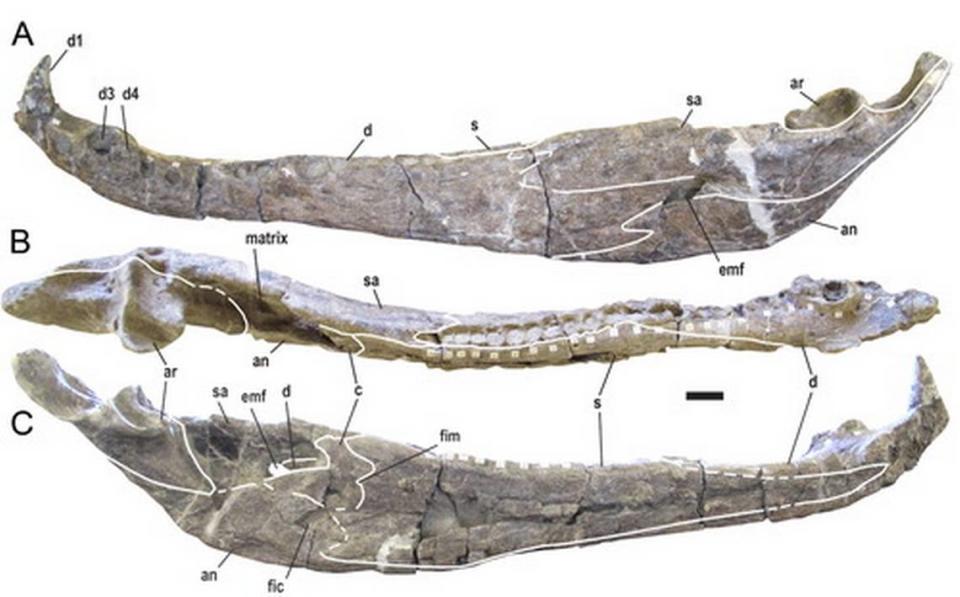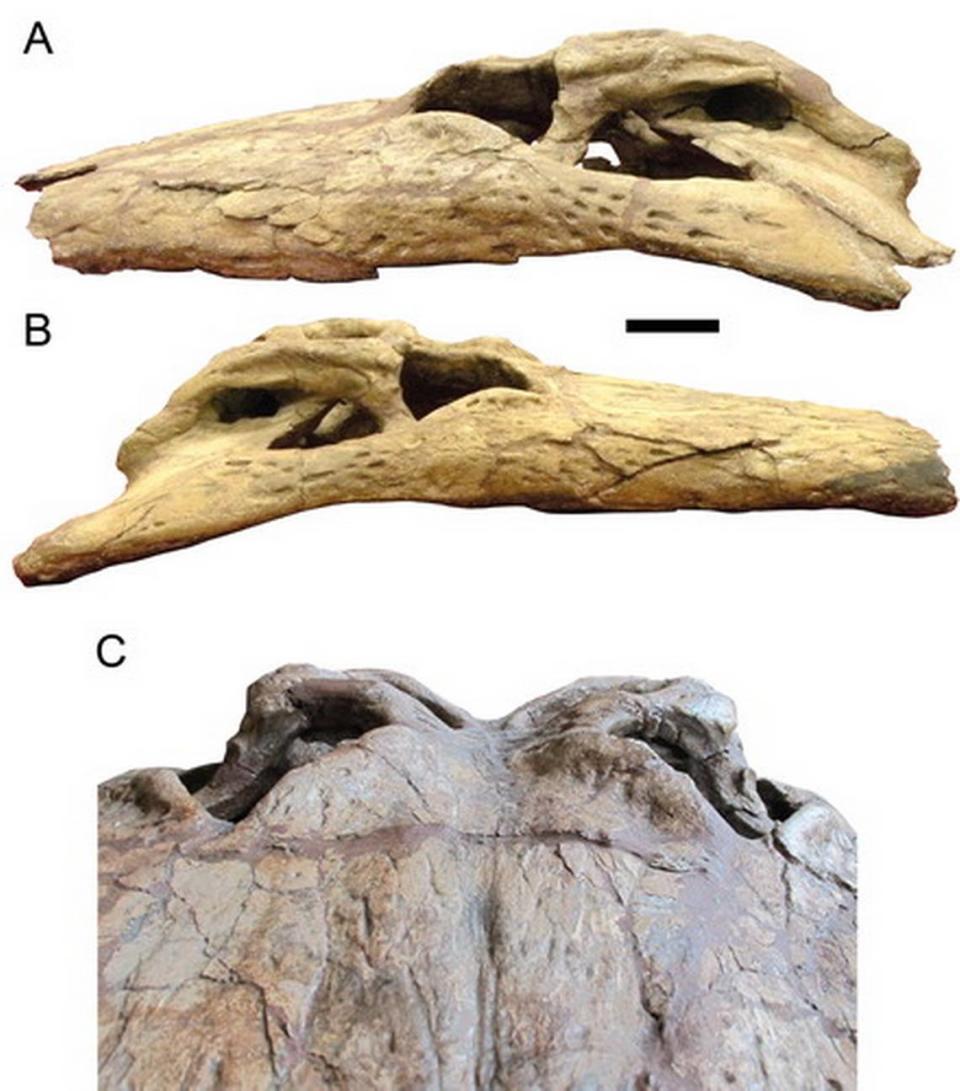‘Terror crocodiles’ with banana-sized teeth once feasted on dinosaurs, fossils show
About 80 million years ago, giant “terror crocodiles” with banana-sized teeth prowled ancient American lands, preying on just about everything in sight, including dinosaurs.
These beasts, from the genus Deinosuchus, were 33 feet long — picture a giraffe standing on top of another — and were more related to alligators than crocodiles, according to a study published in July in the Journal of Vertebrate Paleontology.
This, researchers say, shows that the crocodiles we see today are not “living fossils,” but rather creatures that have evolved “just as dynamically” as others animals.
“Deinosuchus was a giant that must have terrorized dinosaurs that came to the water’s edge to drink,” study co-author Adam Cossette, of the New York Institute of Technology College of Osteopathic Medicine at Arkansas State University, said in a news release. “Until now, the complete animal was unknown. These new specimens we’ve examined reveal a bizarre, monstrous predator.”
The researchers confirmed the predator’s existence after revisiting recently collected fossil specimens from western Texas and samplings from across North America; the team said one kind of species roamed from Montana to northern Mexico, and another lived from New Jersey to Mississippi.
Deinosuchus’, which translates to “terror crocodile,” is known to be one of the largest, if not the largest, crocodile to ever exist, the researchers said, and definitely the largest predator in its living space at the time.

It had a long and broad snout with two holes that are unique to the creatures; experts have yet to understand their purpose. The croc’s nose was also inflated at the tip — another mystery unseen in its present-day relatives.
Bite marks that match its massive skull, teeth and jaw have been found on turtle shells and dinosaur bones, suggesting its diet was a diverse, all-encompassing one.
“It was a strange animal,” study co-author Christopher Brochu, a paleontologist from the University of Iowa, said in the release.
The researchers say more study is needed to better understand the brute and how it became extinct before the main mass extinction event that wiped dinosaurs off the face of the Earth.


